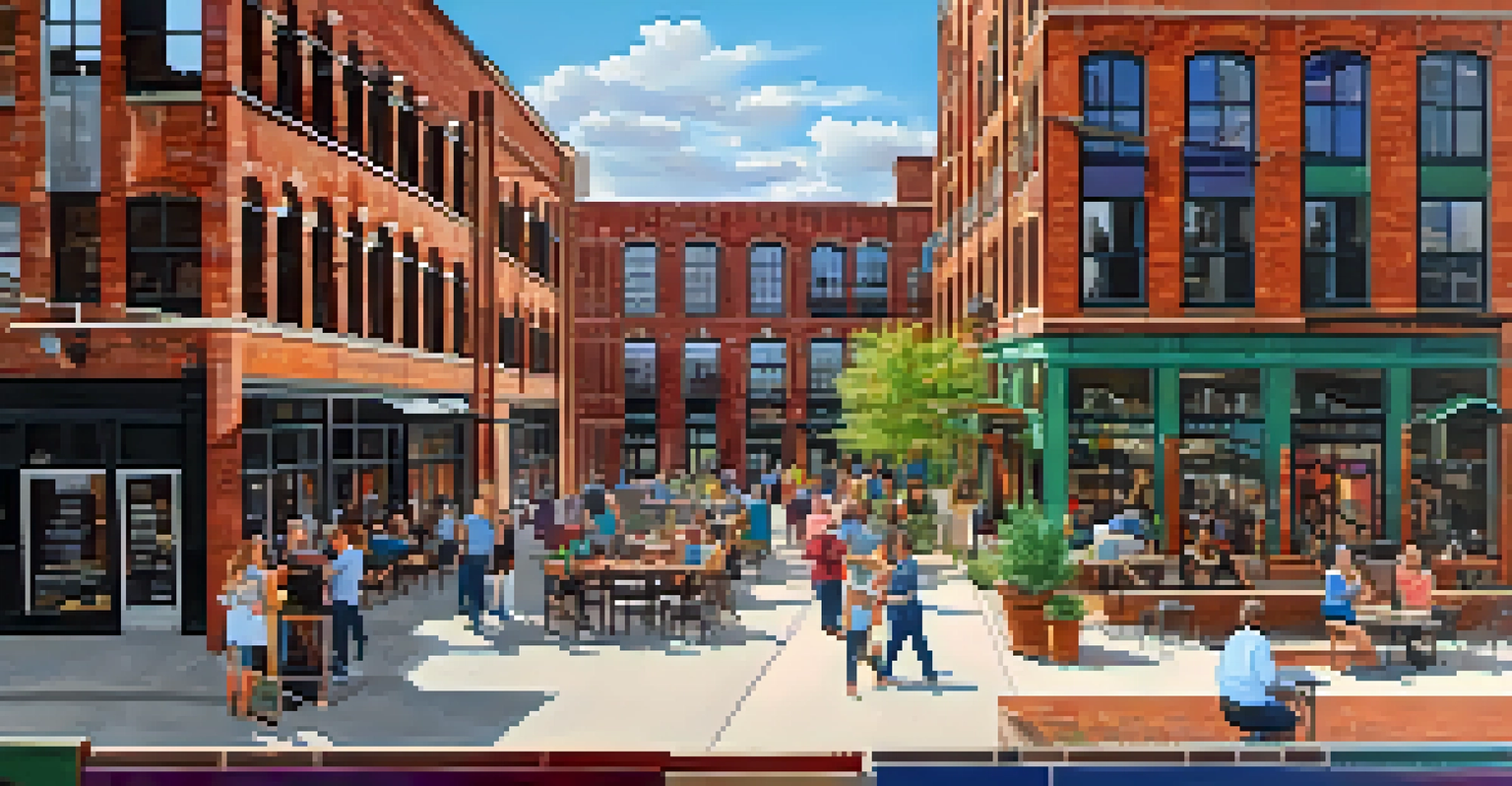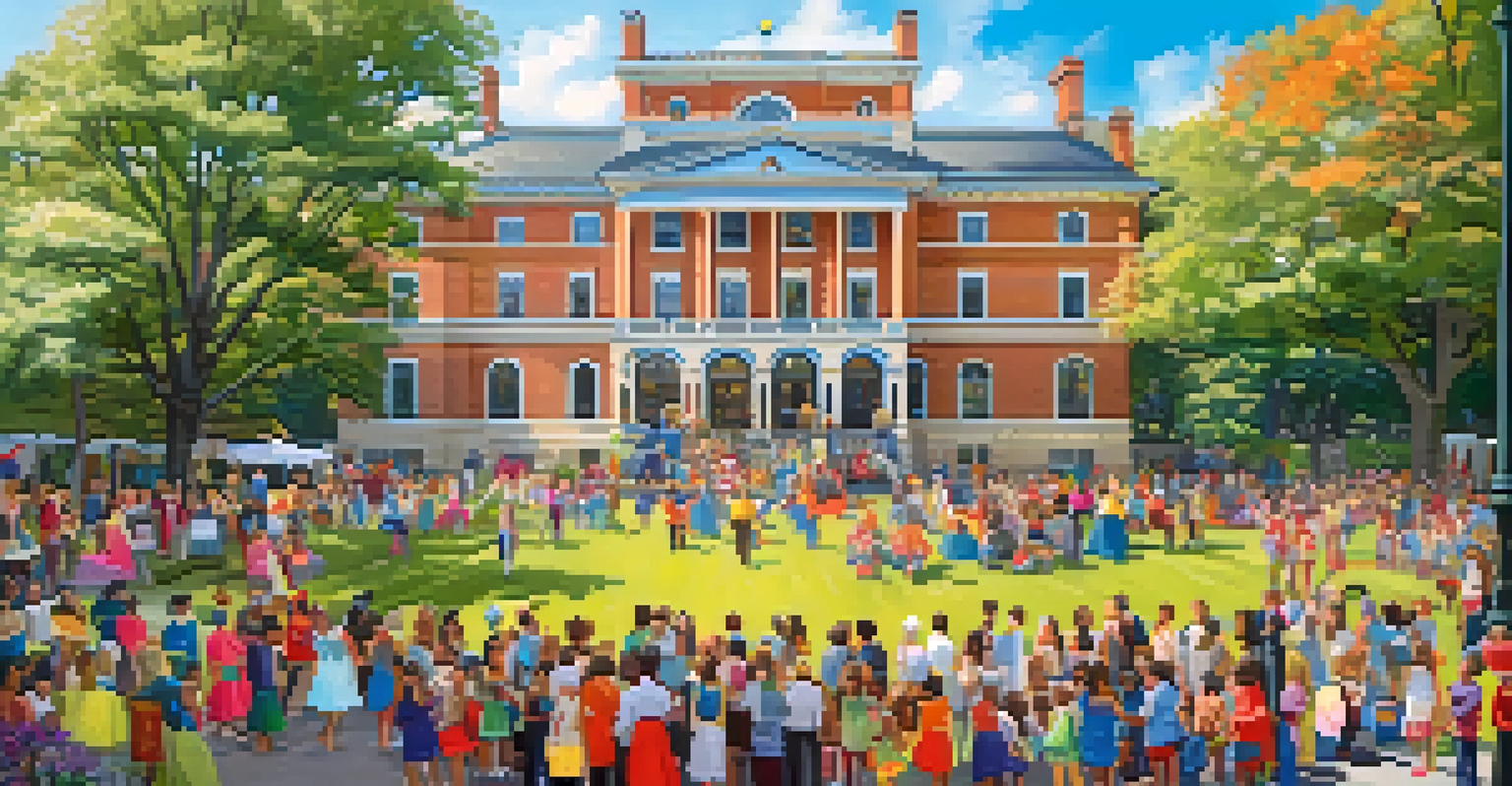Modern Minneapolis: Preserving History in a Growing City

The Historical Backbone of Minneapolis
Minneapolis is a city steeped in history, with roots that trace back to the 19th century. The city’s early development was shaped by its natural resources, particularly its water power, which fueled the flour milling industry. Many historic sites, like the Mill City Museum, tell the story of this vibrant past, showcasing how the city evolved over time.
History is not a burden on the memory but an illumination of the soul.
As the city grows, preserving these historical landmarks becomes crucial. These sites not only provide a glimpse into the past but also serve as cultural touchstones for residents and visitors alike. They are reminders of the city’s journey and identity, linking the old with the new in a rapidly changing urban landscape.
The challenge lies in balancing modern demands with the need to maintain these historical elements. Each new development must consider its impact on the existing historical narrative, ensuring that Minneapolis remains a city that honors its past while welcoming the future.
Recent Developments and Their Impact
In recent years, Minneapolis has seen a surge in new construction, including high-rise apartments and commercial spaces. This growth reflects the city’s booming economy and the influx of new residents who are drawn to its vibrant culture and job opportunities. However, this rapid expansion often raises concerns about the potential erosion of historical sites.

Developers and city planners face the critical task of integrating modern architecture with historic preservation. For instance, the North Loop neighborhood showcases how old warehouses have been transformed into trendy lofts while retaining their historical facades. This thoughtful approach not only preserves the city’s character but also enhances its appeal.
Balancing Growth and Preservation
Minneapolis faces the challenge of integrating modern developments while maintaining its historical landmarks and narratives.
Community engagement plays a vital role in these developments. Residents are increasingly vocal about their desire to maintain historical integrity, leading to collaborations that result in projects that respect both the old and the new. This dialogue fosters a sense of ownership and pride among locals.
Cultural Heritage and Its Significance
Cultural heritage is an essential aspect of Minneapolis’s identity, encompassing its diverse communities and traditions. The city’s historical sites often reflect the stories of various immigrant groups who have contributed to its rich tapestry. Places like the American Swedish Institute celebrate this heritage and educate visitors about the cultural influences that have shaped the city.
Preservation of one's own culture does not require contempt or disrespect for other cultures.
Preserving these sites is not just about maintaining buildings; it’s about honoring the narratives that come with them. Each site has a story that connects generations, enriching the city’s cultural landscape. Moreover, they serve as venues for cultural events, fostering community engagement and understanding.
As Minneapolis continues to grow, the challenge remains to keep these cultural narratives alive. Innovative programs and partnerships can help ensure that the diverse voices of the city are represented, allowing for a more inclusive historical preservation process.
Legislation Supporting Historical Preservation
Legislation plays a crucial role in the preservation of Minneapolis’s historical sites. The city has established various policies and incentives aimed at protecting these landmarks from being lost to modern development. For example, the Minneapolis Heritage Preservation Commission reviews development proposals to ensure they align with the city’s preservation goals.
These legal frameworks not only safeguard buildings but also promote awareness about the importance of historical preservation. They encourage developers to consider adaptive reuse, which allows for the transformation of old structures into functional spaces without sacrificing their historical integrity.
Community Engagement is Key
Active involvement from residents in preservation efforts fosters a sense of ownership and ensures that development reflects community desires.
Community advocacy is also essential in pushing for stronger preservation measures. Local organizations and citizens often unite to advocate for their beloved landmarks, ensuring that their voices are heard in the legislative process. This grassroots effort highlights the community’s commitment to preserving its heritage.
Adaptive Reuse: A Win-Win Solution
Adaptive reuse has emerged as a popular strategy in Minneapolis, providing a way to repurpose old structures while meeting modern needs. This approach not only preserves the historical character of the city but also contributes to sustainability by reducing waste. By converting existing buildings into new uses, the city can maintain its architectural legacy.
Examples of adaptive reuse abound, from transforming old factories into art studios to converting historic theaters into performance spaces. These projects breathe new life into forgotten structures, ensuring they remain integral parts of the community. They also attract visitors, boosting local economies and fostering a sense of pride among residents.
Moreover, adaptive reuse often sparks creativity and innovation. Architects and developers are challenged to think outside the box, finding ways to honor the past while providing modern amenities. This fusion of history and contemporary design enriches the urban experience, making Minneapolis a unique place to live and visit.
Community Involvement in Preservation Efforts
Community involvement is a cornerstone of successful historical preservation in Minneapolis. Local residents and organizations often spearhead initiatives aimed at raising awareness about the city’s historical significance. Whether through neighborhood meetings, educational programs, or social media campaigns, these efforts cultivate a sense of ownership and responsibility for preserving the city’s heritage.
Volunteering for preservation projects or participating in local history tours allows residents to engage actively with their surroundings. This hands-on approach fosters a deeper appreciation for the city’s history and encourages a commitment to preserving it for future generations. It also strengthens community bonds, as neighbors come together to advocate for shared interests.
Adaptive Reuse Promotes Sustainability
Transforming old structures for new uses not only preserves the city's architectural legacy but also supports sustainable practices.
Additionally, local governments recognize the importance of community input. By involving residents in planning processes, they can ensure that development reflects the needs and desires of the community. This collaborative effort not only supports preservation but also enhances the overall quality of life in Minneapolis.
Looking Ahead: The Future of Minneapolis
As Minneapolis continues to grow and evolve, the future of its historical preservation remains a vital conversation. The city faces the challenge of maintaining its unique character amid rapid urbanization. However, with a commitment to thoughtful development and community engagement, there is hope for a harmonious balance between growth and preservation.
Innovative strategies, such as incorporating technology into preservation efforts, could pave the way for a more sustainable future. Virtual tours and digital archives can bring history to life, making it accessible to a broader audience. This approach not only preserves the past but also engages a younger generation in the city’s rich narrative.

Ultimately, the future of Minneapolis lies in its ability to adapt while honoring its history. By fostering a culture of preservation and collaboration, the city can ensure that its historical treasures are cherished and celebrated for generations to come.